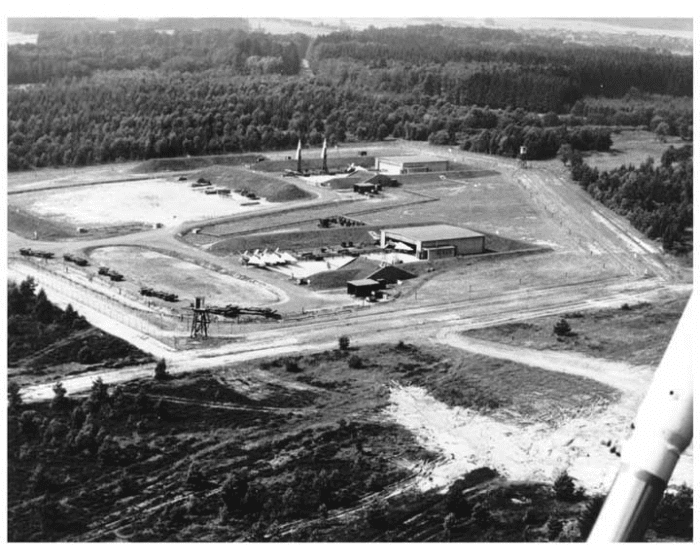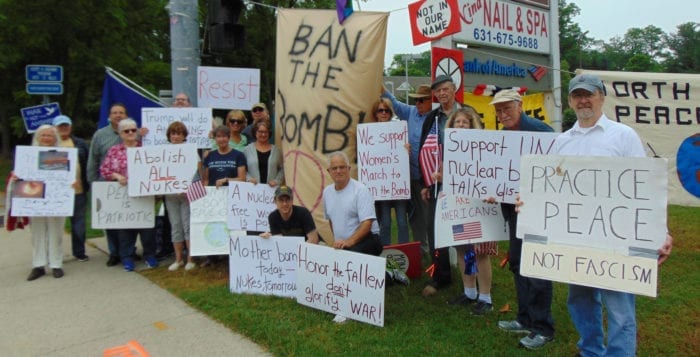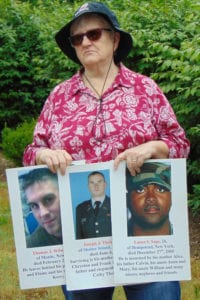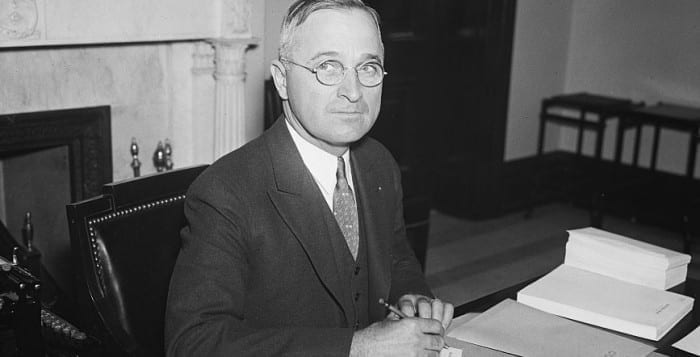By Rich Acritelli, Sean Hamilton, Carolyn Settepani and Madelyn Zarzycki
In 1962, the Cuban Missile Crisis came extremely close to pushing the superpowers of the United States and Soviet Union into a nuclear war. Closer to home, people went to church to light candles in the hope that a peaceful resolution would be found to prevent war. Little did our local citizens ever know about the history of Long Island, especially that of Rocky Point, in how close the Cold War was to our residents. Within the sprawling acres of the conservation area that stretches from Miller Place, Rocky Point, Ridge, and Shoreham, was a nuclear missile silo.

This was one of 19 missile bases that were built by the U.S. military and government to ensure the protection of New York City. While it is extremely unique to have this piece of history on the North Shore, these weapon sites were also in Oyster Bay, Lloyd Harbor, Lido Beach, and Amityville. Citizens in upstate New York and northern New Jersey had these weapons in their midst which were stationed near major population centers, in the suburbs, near schools, businesses, etc. From 1945 to 1990, hostile tensions were demonstrated by the U.S. and Soviet Union in every corner of the world, and the roots to protect against the prospects of a communist attack were based within the pine barrens of Rocky Point.
Most people never realized how close they came to being near an operational missile that was designed to fire at a moment’s notice. Later, private homes were built on the missile sites in Oyster Bay and Lloyd Harbor. In Lido Beach, where missiles were a short distance from the Atlantic Ocean, it is now the headquarters of the Long Beach School District bus depot. If you were to hike around Camp Hero in Montauk, there are many reminders of the Cold War including a radar tower and a series of military bunkers. Within our local conservation area, thousands of local mountain bikers a year have surely ridden through these numerous trails, where one is able to see the silo protruding out of the ground. Situated around this long-removed weapon is a fence that has signs to warn the people not to enter this once classified and dangerous area.
Today, it is possible to go to this location from trails that start at the Rocky Point Route 25A Bypass. Not too far from the Broadway light, there is a straight trail that leads for a half of a mile southward. If you’re mountain biking, running or walking, you will quickly reach an open field. It is easy to observe older military roads, cement, brick gate pillars, and barbed wire fencing. It is also possible to reach this spot by traveling down Rocky Point-Yaphank Road and about three quarters of a mile south of the condominiums, there is an access road that will take you southeastern to an old parking lot. At this spot, there is a noticeable black military road that will precisely lead to one of the 250 Nike Missile sites previously present were in America.
Underground is a bunker complex area that was built some 50 feet long and 60 feet wide. Although these missile bases were organized by the U.S. Army, these bases’ functions were later handed off to the National Guard that had a full-time garrison of soldiers and reservists. In the 1960s, the soldiers that manned these sensitive weapons were paid $85 a week, purchased nearby homes and said little to their families about this vital duty. If these weapons were to be fired in response to an attack by the Soviet Union, it was estimated that they could fly 1,600 mph, reached altitudes of 70,000 feet and had a conventional warhead and a range of about 25 miles.
As with the advent of new technology, many of these weapons were quickly considered to be obsolete. Eventually, these military bases that were located on Long Island were closed and only the Amityville and Rocky Point sites remained open during most of the Cold War. The Ajax missile was later replaced by the Hercules that allowed for a range of 90 miles and ten kilotons of explosives (three less than what was used on Hiroshima). From 1959 to 1964, there were 56 of these powerful weapons that were stored in metal sheds in Westhampton Beach that would target any Soviet aircraft that could attack the area. Today, this is the location of a training firing and vehicle range for the Suffolk County Police and 106th Air National Guard.

Many of these weapons were created to attack long range Soviet bombers targeting the highly populated areas of Manhattan. Although they were placed near the North Shore, the base at Rocky Point was completely top secret with two fences (one being electric) and guard dogs. The codes were kept in safes, and at all times there had to be two military officials to concur over the status of the codes and firing. These bases were always the center of heightened military discipline and drills.
To keep the soldiers sharp to their own attention to detail, many of these men and women had inspections, military scenarios and trips to New Mexico, where they received advanced annual training. It was stated in earlier stories that the missile battery at Rocky Point excelled with national army awards for preparation and was rated as one of the five top bases for these weapons in America. Not too far from the summer bungalows, baseball fields, Joseph A. Edgar Imtermediate School and the older hamlet of Rocky Point was an unknown reminder of the threats of the Cold War. While the U.S. and Soviet Union competed for domination in Berlin, Cuba, Vietnam and Afghanistan, there were many local military residents that quietly ensured the national security of this country within the trails of the Rocky Point Conservation Area.
This article was a collaboration with students in the Rocky Point High School History Honors Society and its advisor, Rich Acritelli.








